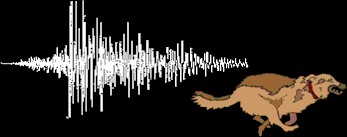
Long before advanced meteorological equipment came into existence, the ancient Pacific islanders had already developed complex systems — based on traditional knowledge — to explain and understand nature, and to predict any impending disasters.
“Climate traditional knowledge is the knowledge held by those living on the land, whether they are indigenous or non-indigenous peoples, which can be used for climate forecasting. This knowledge is not static and can continually evolve over time and it is often embedded in practice and belief,” said Siosinamele Lui, a climate traditional knowledge officer at Secretariat of the Pacific Region Environment Program or SPREP.
Regional organizations, cultural centers and community groups have long been interested in preserving traditional knowledge accounts, not just for cultural sentiment but for practical purposes, as well.
“Our communities have always been using traditional knowledge to forecast and plan, from organizing daily activities to festivals, planting and harvesting of crops to marriage ceremonies. Traditional knowledge has always benefitted our communities,” Lui said in a Q&A provided by SPREP.

Last year SPREP launched a project on Climate Traditional Knowledge in partnership with the Australian Bureau of Meteorology in Niue, Samoa, Solomon Islands, Tonga and Vanuatu. The project seeks to help preserve weather and combine traditional knowledge with current meteorological forecasts and increase the recognition of traditional knowledge to build resilience to extreme events.
Last year SPREP launched a project on Climate Traditional Knowledge in partnership with the Australian Bureau of Meteorology in Niue, Samoa, Solomon Islands, Tonga and Vanuatu. The project seeks to help preserve weather and combine traditional knowledge with current met forecasts and increase the recognition of traditional knowledge to build resilience to extreme events.
Pacific communities have survived natural disasters by relying on traditional knowledge attained and passed down from generation to generation.
“Our Pacific communities have and are still using traditional forecasting methods and techniques to forecast weather and climate events,” Lui said.
Over the centuries, people have claimed seeing animals run for the hills or leave their burrows days or hours before an earthquake hits.
“From looking at the biological (animal and plant behavior) and astronomical indicators (moon phases, stars) our Pacific communities knew what will happen two to three months ahead before the onset of the El Nino Southern Oscillation phases,” Lui said.
She has spent a decade working for the Samoa Meteorological Service, specifically the Geoscience and Oceans Observations before working at Secretariat of the Pacific Region Environment Program. Sina was instrumental in establishing the Earthquake and Tsunami Monitoring Network and Warning Centre for Samoa, she has also enjoyed providing advice and mentoring other young Pacific island women working in this area. "I was always interested in oceanography, volcanoes and earthquakes and the Met Service was the closest to working with all three at the same time,” said Lui, who also previously worked at the Department of Environment and Conservation as a conservation officer.
Pacific Meteorological Services, donors, development partners and stakeholders gathered in Honiara, Solomon Islands for the Fourth Pacific Meteorological Council. The forum was followed by the Second Pacific Ministerial Meeting on Meteorology on Aug. 18. Work included collecting, documenting, storing and analyzing traditional knowledge stories to identify climate indicators used by pilot communities. Participants also established a process of verification of the indicators to check the accuracy of data collected before traditional knowledge is integrated with modern forecasting. “What I've found really interesting about this project is that it makes it easier to have conversations about climate change/climate science with communities. The traditional knowledge project is a communication tool, and it bridges the gap between science and social science, between policies and technical work in the world of Meteorological services,” Lui said.
“What may be difficult to explain in meteorological terms can be easily understood through traditional knowledge because that is what our Pacific communities can relate to and understand. When talking about seasonal forecasting, not everyone can understand the technicality of the information, but if we use traditional knowledge, the seasonal terminology, language and prediction techniques communities are used to, it increases the intake of scientific information as well as increasing community resilience. In some communities, they know that it will be an active cyclone season if the turtles nest higher up in the sand dunes (Vanuatu TK). This knowledge adds value to seasonal forecasts,” she added.


